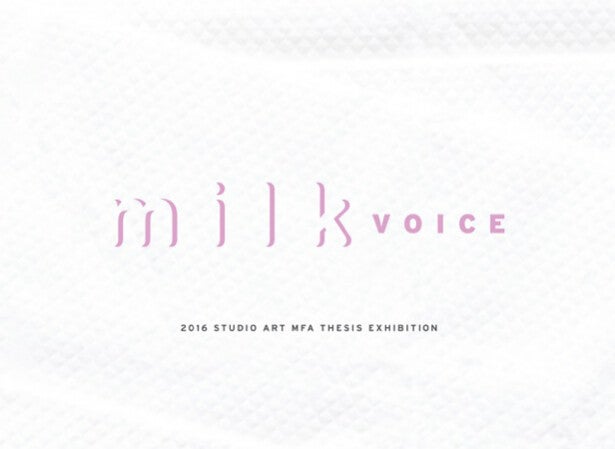milkVOICE: 2016 Studio Art MFA Thesis Exhibition

The culmination of an intensive three-year program of work, milkVOICE features artworks made in a variety of media including sculpture, painting, print, photography, installation and video. These ten artists use their work to explore the world around them—to connect, describe, communicate and question. Their works explore a diversity of themes including embodiment, desire, relationships, personal connections to specific environments and transhuman possibilities of the future and near-now.
Artists
Adam Boley (Texas) records duck hunts in which he has participated. His videos of these events explore notions of tradition, masculinity, anticipation and duration as well as our relationship to animals and landscapes.
Roni Chelben’s (Israel) psychologically charged videos document her attempts to create relationships while simultaneously recording her failure to do so.
Adam Crosson (Arkansas) makes sculptures and photographs that reveal complex conditions of site, identity and place.
Annie May Johnston (Colorado) compresses layered and abstracted interiors through skewed perspective, pattern, collage and layering, resulting in a dream-like and optically vibrant environment.
Gracelee Lawrence’s (North Carolina) works consider the systems and structures of control around female bodies. She uses food as a reference to and replacement for the body in sculptures, fountains, videos and drawings.
Bryan Martello (Massachusetts) uses the camera as an elevating tool, transforming the overlooked and cheap into the desirable, thereby constructing a catalog of eccentrically touched images.
Elizabeth McClellan (California) creates a multi-media storytelling environment in which she explores social and physical porousness through accelerationist fantasies of genetic manipulation.
Annie B. Miller (California) paints liminal spaces of sensuality and desire, the longing to touch, to penetrate, to hold and make contact and the inherent failure or displacement of this longing.
Rachel Stuckey (Texas) uses video, computers and the Internet to think about technology’s influence on human bodies, minds and systems of belief.
Anne Clare Rogers’ (Minnesota) minimal sculptures are odd approximations of human bodies. They locate themselves somewhere between the wish and the fact.




